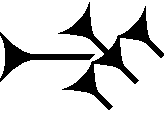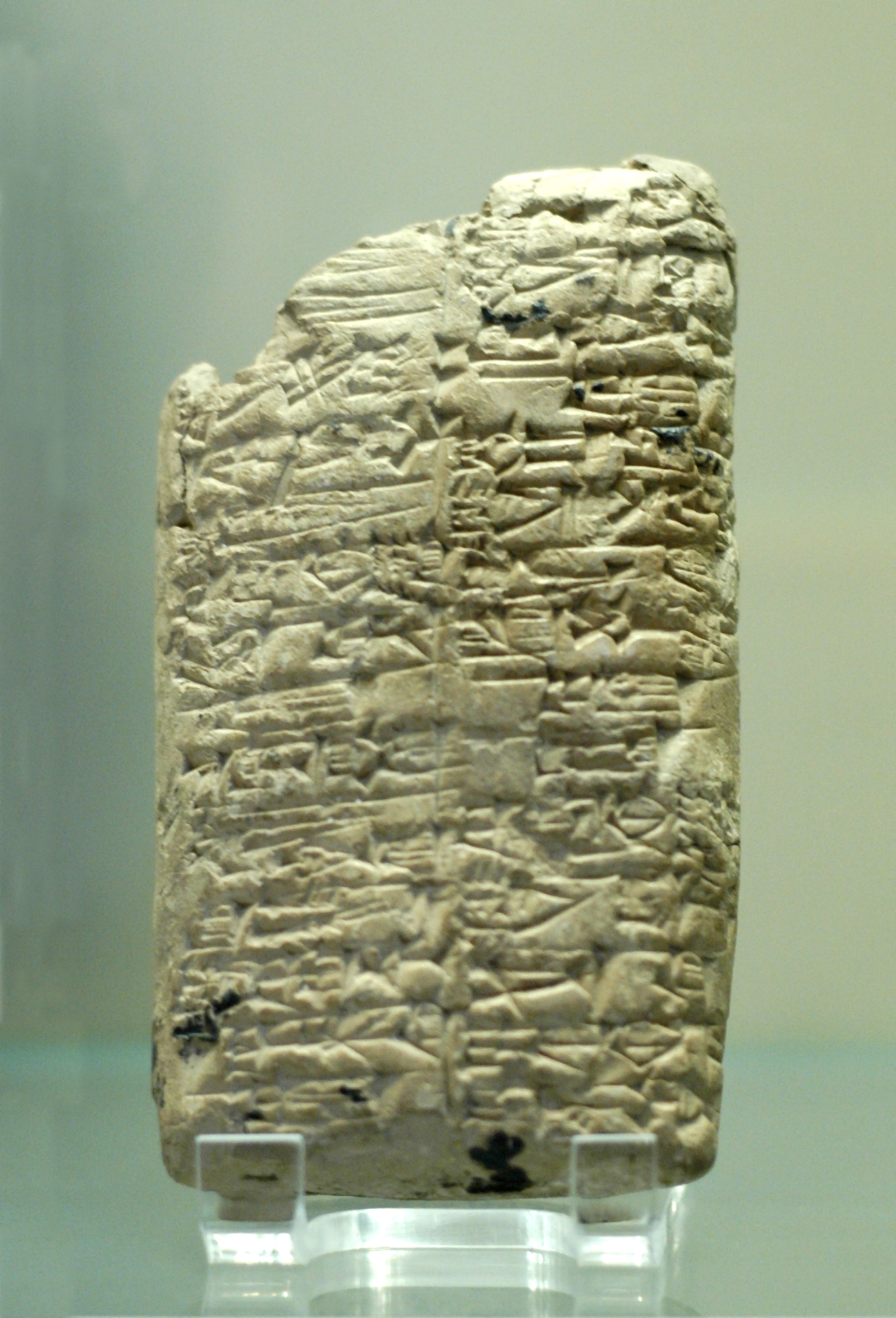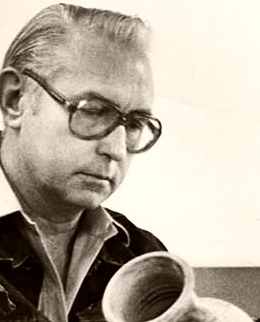|
Mu (cuneiform)
The cuneiform sign mu, is a common-use sign of the Amarna letters, the ''Epic of Gilgamesh,'' and other cuneiform texts (for example Hittite language, Hittite texts). It is also used as MU in which case it is a Sumerogram meaning "name," "year" or "life." Linguistically, it has the alphabetical usage in texts for ''m'', or ''u'', or syllabically for ''mu''. The u is replaceable in word formation by any of the 4 vowels: ''a, e, i,'' or ''u''. One reason for the high usage of mu in the Amarna letters is for the word: "peace", or "be safe", Akkadian language ''šalāmu'', for ''"to be sound, whole, safe"''. It is used especially between the Great King letters. ''Epic of Gilgamesh'' usage The ''mu'' sign usage in the ''Epic of Gilgamesh'' is as follows: ''mu''-(266 times); ''MU''-(87). References *William L. Moran, Moran, William L. 1987, 1992. ''The Amarna Letters.'' Johns Hopkins University Press, 1987, 1992. 393 pages.(softcover, ) * Parpola, 1971. ''The Standard Babylo ... [...More Info...] [...Related Items...] OR: [Wikipedia] [Google] [Baidu] |
B098ellst
B, or b, is the second letter of the Latin alphabet, used in the modern English alphabet, the alphabets of other western European languages and others worldwide. Its name in English is ''bee'' (pronounced ), plural ''bees''. It represents the voiced bilabial stop in many languages, including English. In some other languages, it is used to represent other bilabial consonants. History The Roman derived from the Greek capital beta via its Etruscan and Cumaean variants. The Greek letter was an adaptation of the Phoenician letter bēt . The Egyptian hieroglyph for the consonant /b/ had been an image of a foot and calf , but bēt (Phoenician for "house") was a modified form of a Proto-Sinaitic glyph adapted from the separate hieroglyph Pr meaning "house". The Hebrew letter bet is a separate development of the Phoenician letter. By Byzantine times, the Greek letter came to be pronounced /v/, so that it is known in modern Greek as ''víta'' (still written ). The ... [...More Info...] [...Related Items...] OR: [Wikipedia] [Google] [Baidu] |
Clay Tablet
In the Ancient Near East, clay tablets (Akkadian language, Akkadian ) were used as a writing medium, especially for writing in cuneiform, throughout the Bronze Age and well into the Iron Age. Cuneiform characters were imprinted on a wet clay tablet with a stylus often made of Reed (plant), reed (reed pen). Once written upon, many tablets were dried in the sun or air, remaining fragile. Later, these unfired clay tablets could be soaked in water and recycled into new clean tablets. Other tablets, once written, were either deliberately fired in hot kilns, or inadvertently fired when buildings were burnt down by accident or during conflict, making them hard and durable. Collections of these clay documents made up the first archives. They were at the root of the first library, libraries. Tens of thousands of written tablets, including many fragments, have been found in the Middle East. Most of the documents on tablets that survive from the Minoan civilization, Minoan and Mycenaean ... [...More Info...] [...Related Items...] OR: [Wikipedia] [Google] [Baidu] |
Amarna Letter EA 15
Amarna (; ) is an extensive ancient Egyptian archaeological site containing the ruins of Akhetaten, the capital city during the late Eighteenth Dynasty of Egypt, Eighteenth Dynasty. The city was established in 1346 BC, built at the direction of the Pharaoh Akhenaten, and abandoned shortly after Akhenaten#Death and burial, his death in 1332 BC. The site is on the east bank of the Nile River, in what today is the Egyptian province of Minya Governorate, Minya. It is about south of the city of Minya, Egypt, al-Minya, south of the Egyptian capital, Cairo, and north of Luxor (site of the previous capital, Thebes, Egypt, Thebes). The city of Deir Mawas lies directly to its west. On the east side of Amarna there are several modern villages, the chief of which are l-Till in the north and el-Hagg Qandil in the south. Activity in the region flourished from the Amarna Period until the later Egypt (Roman province), Roman era. Name The name ''Amarna'' comes from the Beni Amran tribe that ... [...More Info...] [...Related Items...] OR: [Wikipedia] [Google] [Baidu] |
Cuneiform Line Drawing
Cuneiform is a logo- syllabic writing system that was used to write several languages of the Ancient Near East. The script was in active use from the early Bronze Age until the beginning of the Common Era. Cuneiform scripts are marked by and named for the characteristic wedge-shaped impressions (Latin: ) which form their signs. Cuneiform is the earliest known writing system and was originally developed to write the Sumerian language of southern Mesopotamia (modern Iraq). Over the course of its history, cuneiform was adapted to write a number of languages in addition to Sumerian. Akkadian texts are attested from the 24th century BC onward and make up the bulk of the cuneiform record. Akkadian cuneiform was itself adapted to write the Hittite language in the early second millennium BC. The other languages with significant cuneiform corpora are Eblaite, Elamite, Hurrian, Luwian, and Urartian. The Old Persian and Ugaritic alphabets feature cuneiform-style signs; however, they ... [...More Info...] [...Related Items...] OR: [Wikipedia] [Google] [Baidu] |
Mari, Syria
Mari (Cuneiform: , ''ma-riki'', modern Tell Hariri; ) was an ancient Semitic people, Semitic city-state in modern-day Syria. Its remains form a Tell (archaeology), tell 11 kilometers north-west of Abu Kamal on the Euphrates, Euphrates River western bank, some 120 kilometers southeast of Deir ez-Zor. It flourished as a trade center and hegemonic state between 2900 BC and 1759 BC. The city was built in the middle of the Euphrates trade routes between Sumer in the south and the Ebla, Eblaite kingdom and the Levant in the west. Mari was first abandoned in the middle of the 26th century BC but was rebuilt and became the capital of a hegemonic East Semitic languages, East Semitic state before 2500 BC. This second Mari engaged in a long war with its rival Ebla and is known for its strong affinity with Sumerian culture. It was destroyed in the 23rd century BC by the Akkadians, who allowed the city to be rebuilt and appointed a military governor (''Shakkanakku''). The ... [...More Info...] [...Related Items...] OR: [Wikipedia] [Google] [Baidu] |
Claude Schaeffer
Claude may refer to: People and fictional characters * Claude (given name), a list of people and fictional characters * Claude (surname), a list of people * Claude Callegari (1962–2021), English Arsenal supporter * Claude Debussy (1862–1918), French composer * Claude Kiambe (born 2003), Congolese-born Dutch singer * Claude Lévi-Strauss (1908–2009), French anthropologist and ethnologist * Claude Lorrain (c. 1600–1682), French landscape painter, draughtsman and etcher traditionally called just "Claude" in English * Claude Makélélé (born 1973), French football manager * Claude McKay (1890–1948), Jamaican-American writer and poet * Claude Monet (1840–1926), French painter * Claude Rains (1889–1967), British-American actor * Claude Shannon (1916–2001), American mathematician, electrical engineer and computer scientist * Madame Claude (1923–2015), French brothel keeper Fernande Grudet Places * Claude, Texas, a city * Claude, West Virginia, an unincorporated co ... [...More Info...] [...Related Items...] OR: [Wikipedia] [Google] [Baidu] |
Old Babylonian
Old Babylonian may refer to: *the period of the First Babylonian dynasty (20th to 16th centuries BC) *the historical stage of the Akkadian language Akkadian ( ; )John Huehnergard & Christopher Woods, "Akkadian and Eblaite", ''The Cambridge Encyclopedia of the World's Ancient Languages''. Ed. Roger D. Woodard (2004, Cambridge) Pages 218–280 was an East Semitic language that is attested ... of that time See also * Old Assyrian (other) {{disambig ... [...More Info...] [...Related Items...] OR: [Wikipedia] [Google] [Baidu] |
Giorgio Buccellatti
Giorgio may refer to: * Castel Giorgio, ''comune'' in Umbria, Italy * Giorgio (name), an Italian given name and surname * Giorgio Moroder, or Giorgio, Italian record producer ** ''Giorgio'' (album), an album by Giorgio Moroder * "Giorgio" (song), a song by Lys Assia * Giorgio Bruno, a character from the video game ''Time Crisis 4'' * Giorgio Zott, the main antagonist from the video game ''Time Crisis 3'' * Giorgio Beverly Hills, a prestige fragrance brand See also * Georgios * Georgio (other) Georgio is a variant of George. It may refer to: Mononyms * Georgio (singer) (born 1966), full name Georgio Alentini, born George Allen. American singer, songwriter, and musician * Georgio (rapper) (born 1993), birth name Georges Édouard Nicolo, ... * San Giorgio (other) {{disambig ... [...More Info...] [...Related Items...] OR: [Wikipedia] [Google] [Baidu] |
Megiddo
Megiddo may refer to: Places and sites in Israel * Tel Megiddo, site of an ancient city in Israel's Jezreel valley * Megiddo Airport, a domestic airport in Israel * Megiddo church (Israel) * Megiddo, Israel, a kibbutz in Israel * Megiddo Junction, a motorway junction in northern Israel United States churches * Megiddo Mission, Rochester, New York * Megiddo Church, Rochester, New York People * Nimrod Megiddo, mathematician and computer scientist Fiction * '' Megiddo: The Omega Code 2'', a 2001 American film * "Megiddo", the 65th chapter and 34th episode of ''That Time I Got Reincarnated as a Slime'' * Prince Megiddo, a character in the Japanese television series ''Kagaku Sentai Dynaman'' * Aradia and Damara Megido, characters from the webcomic ''Homestuck'' (2009–2016) Music * ''Megiddo'' (EP), a 1997 EP by Satyricon * ''Megiddo'' (Lauren Hoffman album), 1997 * ''Dawn of Megiddo'', a song from the 1985 album '' To Mega Therion'' by the Swiss metal band Celtic Frost O ... [...More Info...] [...Related Items...] OR: [Wikipedia] [Google] [Baidu] |
Biridiya
Biridiya was the ruler of Megiddo, northern part of the southern Levant, in the 14th century BC. At the time Megiddo was a city-state submitting to the Egyptian Empire. He is part of the intrigues surrounding the rebel Labaya of Shechem. History Biridiya was the ruler of Magidda (Megiddo). At the time, Labaya of Shechem tried to expand his territory and power. Labaya attacked Megiddo (EA 244) forcing the people to flee inside the city walls and making it impossible to harvest fields. Both Biridiya and Yashdata (EA 248/EA 245) attacked Labaya, apparently with the support of Suruata of Akko. At one point Suruata took Labaya away from Megiddo to send him by boat to the Pharaoh, but he received a ransom and released Labaya (EA 245). Amarna Archive In Egypt, the Amarna Archive (c. 1350 BC) contained letters authored by Biridya. The archive covers diplomatic correspondence from the time of Amenhotep III, Akhenaten Akhenaten (pronounced ), also spelled Akhenaton or Echnaton ( '' ... [...More Info...] [...Related Items...] OR: [Wikipedia] [Google] [Baidu] |
Anson Rainey
Anson Frank Rainey (January 11, 1930 – February 19, 2011) was professor emeritus of ancient Near Eastern cultures and Semitic linguistics at Tel Aviv University. He is known in particular for contributions to the study of the Amarna tablets, the noted administrative letters from the period of Pharaoh Akhenaten's rule during the 18th Dynasty of Egypt.Rollston, C. (2011)Among the last of the titans: Aspects of Professor Anson Rainey's life and legacy (1930–2011)(February 20, 2011); retrieved May 22, 2017 He authored and edited books and articles on the cultures, languages and geography of the Biblical lands. Early life Anson Rainey was born in Dallas, Texas, in 1930. Upon the death of his father that same year, he was left with his maternal grandparents. He attended Brown Military Academy in San Diego, California, from 1943 to 1946. After one semester of study there – as a cadet battalion commander – he served as assistant commandant at Southern California M ... [...More Info...] [...Related Items...] OR: [Wikipedia] [Google] [Baidu] |




